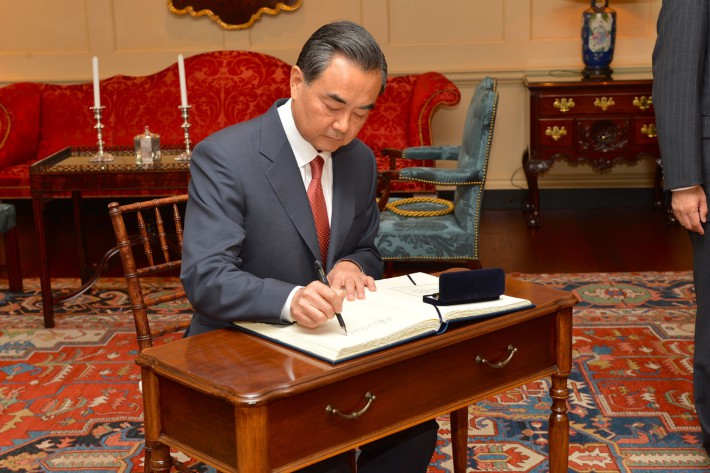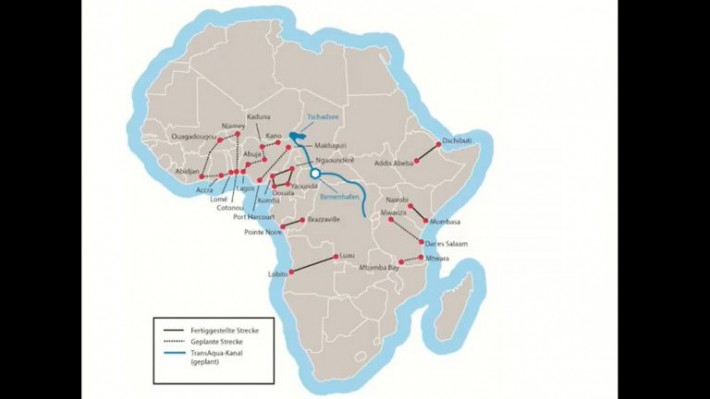Schiller Institute founder Helga Zepp-LaRouche made the following comments on Jan. 16, 2018.
Concerning the controversies around what President Trump did or did not say, we absolutely have to remain on the high ground, which means emphasizing Lyndon LaRouche’s “Four Laws” and that the United States must join the New Silk Road.
Now, what that actually means is that it should be obvious to anybody that you cannot solve the problem of immigrants in the United States, or the drug epidemic, without bringing development to the Central American and Caribbean countries in particular. There are many places which are not “shitholes,” but they are hellholes. For example, according to the FAO the level of chronic undernourishment, ie hunger, in Sub-Saharan Africa is 22.7% of the total population, which is the worst in the world. The second worst region is the Caribbean, where it averages 17.7%. But in Haiti}, an absolutely unbelievable 47% of people have permanent hunger, and 80% are living in poverty. And the whole Caribbean is very far from being a luxury cruise paradise: for the people living there, it’s a complete hellhole, as is most of Central America. [See Figures 1 and 2, which compare select physical-economic parameters of Haiti and El Salvador with Spain.]

Figure 1

Figure 2
The only way you can address that is, obviously, what China is already actively doing with their Belt and Road Initiative, for example in Panama, where they are now building a high-speed railroad from Panama City to the border with Costa Rica. And China is also the only country which is seriously helping Haiti, announcing a $5 billion plan to rebuild Port au Prince, the capital of Haiti.
So this requires the whole Belt and Road Initiative, not just one project or two. China has proposed on the highest level for Spain and Portugal to be bridges for the Belt and Road to Ibero-America and the Caribbean, and both Iberian governments have already agreed that they do not just want to be the western end of the New Silk Road, but they want to actively be the bridge to the Spanish- and Portuguese-speaking nations in Ibero-America and also in Africa.
We are working right now on writing up this whole question of extending the New Silk Road into all the Americas, as part of our updated global study on “The New Silk Road Becomes the World Land-Bridge:” to build a high-speed railroad from the southern tip of Ibero-America, Chile and Argentina, all the way through the Darién Gap and the Bering Strait, connecting with the Eurasian infrastructure program (see Figure 3).

Figure 3
Now, one of the big problems there, is a geopolitical leftover that a number of Central American and Caribbean countries still have diplomatic ties with Taiwan and not with the People’s Republic of China. Panama recently switched that and agreed to support the One China policy, and obviously this is a big concern for the Chinese, who are constantly confronted with efforts to not recognize the One China policy. As a matter of fact, they recently complained that Marriott Hotel and other firms are talking about Macau and Hong Kong and Tibet as “other countries,” as if they would not belong to China. So this is a question of accepting the sovereignty of China, which obviously has a lot to do with how they respond.
The situation is economically so severe that you cannot just try to build up from below, but you have to leapfrog and get the productivity level of this whole region up by orders of magnitude. There are obvious angles. For example, you have in French Guiana, which is actually not a sovereign country but a colonialist department of France to the present day, the European Space Agency’s launch site in Kourou, which is very close to the Equator. But then you also have the Brazilian Space Agency’s launch site, in a place called Alcantara, which is even closer to the Equator. These situations are not without problems, but they already represent a very important scientific capacity, and that could be made into a regional project, a science-driver for the entire Caribbean Basin region (see Fig. 4).

Figure 4
Then you have the expanded Panama Canal, the planned Nicaragua Canal, and, as Lyndon LaRouche has often stressed, if you build all of these canals, including the Kra Canal in Thailand, you are really talking about a single world ocean, which would eliminate many of the geopolitical chokepoints of the British.
So we have to really push this, that the United States must join the New Silk Road. This would include building major projects in hurricane-ravaged Puerto Rico, including in Ponce on the southern coast of Puerto Rico, which could become a major port and shipping point for the Maritime Silk Road. Building a deep-water port there would open the whole transport corridors into the Gulf and East coasts of the United States. Connected with that, the Maritime Silk Road would do something similar in Mariel, Cuba, where there is also the plan to build a deep-water port. And since this is very close to the United States, it should all really be integrated into one big project.






















